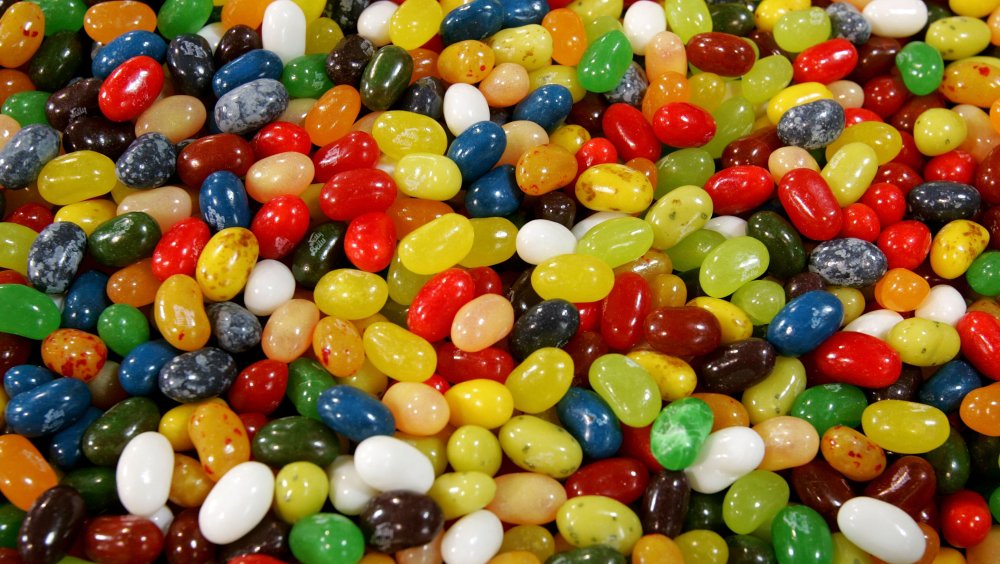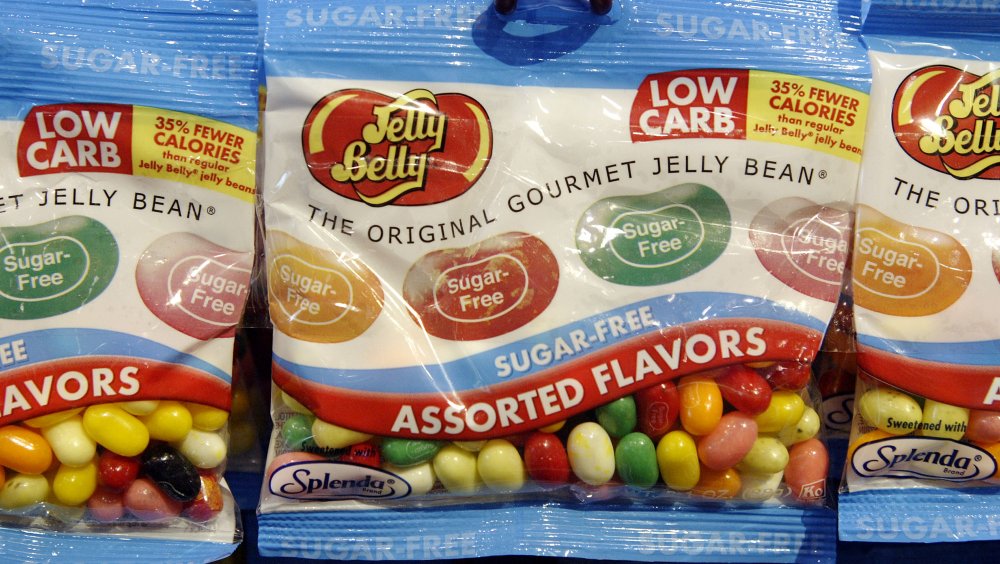The Ingredient You'd Be Surprised To Find In The Jelly Beans You're Eating
While it might sound like an ingredient for making Bertie Bott's Every Flavored Beans rather than your garden variety Jelly Belly, you might be surprised to find out that the extract of an insect from Southeast Asia and India is used as a glaze for jelly beans (via The Irish Times).
Commonly known as shellac or confectioner's glaze, the product comes from the secretion of the lac bug (laccifer lacca is the scientific name). However, given the somewhat odd provenance of the glaze, manufacturers may be more coy about the origins of the product, and you may also see it disguised on ingredient lists solely as E904 (via Mental Floss). Colloquially, especially among people who harvest the product, it's called "beetlejuice" (via Scientific American).
The secretion is produced by the bug after ingesting tree sap, and is deposited onto the branches and trunks of trees, where it is collected and then processed into sheets. The sheets of shellac are then dissolved in ethanol, which produces the glaze.
Other uses for shellac
Shellac is the same product that is used for fingernail polish and hardwood floors, and in fact, the substance has been used for everything from vinyl records to electrical insulation to wax. In Hershey's Whopper candies, it's used not only to make the chocolate balls shiny and more visually appealing, but also helps to extend the shelf life as it prevents the fats in the milk from oxidizing and degrading. This proved to be a big problem when Hershey tried to expand to India where any product which contains animal products must be clearly labeled, so they had to disclose the source of the glaze.
This practice even got the folks at PETA up in arms, calling for candy makers to "debug" their sweets (via PETA). The animal rights activists point out that not only does the substance occur in jelly beans, it also can be found on candy corn and other types of glazed candy.

